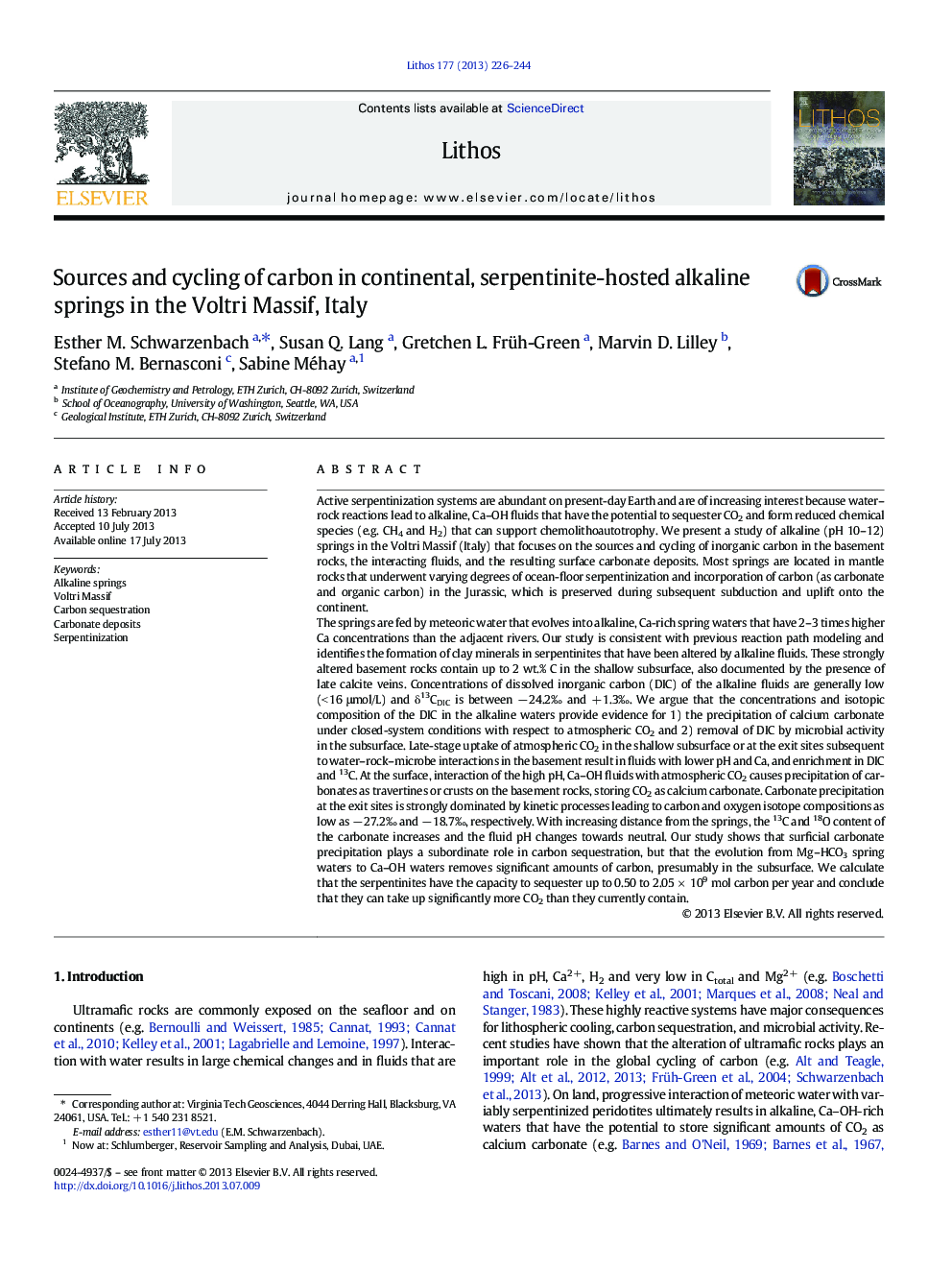| Article ID | Journal | Published Year | Pages | File Type |
|---|---|---|---|---|
| 6440941 | Lithos | 2013 | 19 Pages |
Abstract
The springs are fed by meteoric water that evolves into alkaline, Ca-rich spring waters that have 2-3 times higher Ca concentrations than the adjacent rivers. Our study is consistent with previous reaction path modeling and identifies the formation of clay minerals in serpentinites that have been altered by alkaline fluids. These strongly altered basement rocks contain up to 2 wt.% C in the shallow subsurface, also documented by the presence of late calcite veins. Concentrations of dissolved inorganic carbon (DIC) of the alkaline fluids are generally low (< 16 μmol/L) and δ13CDIC is between â 24.2â° and + 1.3â°. We argue that the concentrations and isotopic composition of the DIC in the alkaline waters provide evidence for 1) the precipitation of calcium carbonate under closed-system conditions with respect to atmospheric CO2 and 2) removal of DIC by microbial activity in the subsurface. Late-stage uptake of atmospheric CO2 in the shallow subsurface or at the exit sites subsequent to water-rock-microbe interactions in the basement result in fluids with lower pH and Ca, and enrichment in DIC and 13C. At the surface, interaction of the high pH, Ca-OH fluids with atmospheric CO2 causes precipitation of carbonates as travertines or crusts on the basement rocks, storing CO2 as calcium carbonate. Carbonate precipitation at the exit sites is strongly dominated by kinetic processes leading to carbon and oxygen isotope compositions as low as â 27.2â° and â 18.7â°, respectively. With increasing distance from the springs, the 13C and 18O content of the carbonate increases and the fluid pH changes towards neutral. Our study shows that surficial carbonate precipitation plays a subordinate role in carbon sequestration, but that the evolution from Mg-HCO3 spring waters to Ca-OH waters removes significant amounts of carbon, presumably in the subsurface. We calculate that the serpentinites have the capacity to sequester up to 0.50 to 2.05 Ã 109 mol carbon per year and conclude that they can take up significantly more CO2 than they currently contain.
Related Topics
Physical Sciences and Engineering
Earth and Planetary Sciences
Geochemistry and Petrology
Authors
Esther M. Schwarzenbach, Susan Q. Lang, Gretchen L. Früh-Green, Marvin D. Lilley, Stefano M. Bernasconi, Sabine Méhay,
